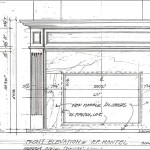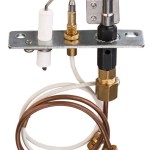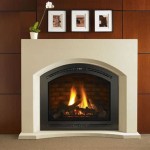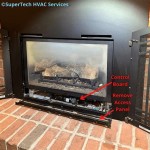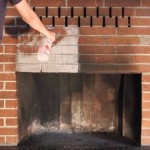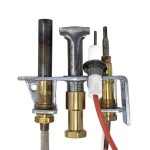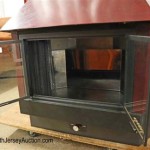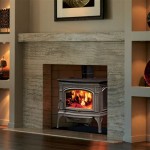Understanding New Gas Fireplace Burn Off
A new gas fireplace is often a desirable addition to a home, offering supplemental heat and aesthetic appeal. However, before enjoying the consistent warmth and comforting ambiance, a necessary procedure known as the burn-off process must be completed. This article will explain the purpose of the burn-off, its duration, and the safety precautions that should be observed.
The burn-off process, sometimes referred to as curing, involves operating the new gas fireplace at its highest setting for a specified period. This initial firing allows the various manufacturing residues and oils used in the construction of the fireplace to evaporate and dissipate. While seemingly simple, understanding the rationale behind this process and adhering to the instructions provided by the manufacturer is crucial for ensuring safe and efficient operation of the fireplace in the long term.
Ignoring the burn-off process or performing it inadequately can lead to lingering odors, inefficient heating, and potentially even damage to the fireplace components. A proper burn-off sets the stage for years of reliable service from the appliance.
The Purpose of the Burn Off Process
The primary reason for performing a burn-off on a new gas fireplace centers around the manufacturing process. During the production of the fireplace, various substances are applied to the components, primarily the metal surfaces of the firebox and the logs. These substances can include:
- Manufacturing Oils: These oils are utilized during the shaping and assembling of metal components. They prevent rust, lubricate machinery, and assist in the forming process.
- Protective Coatings: Temporary coatings might be applied to prevent corrosion or scratches during shipping and handling.
- Residue from Paint or Coatings: Even if baked on at the factory, new paints and coatings continue to off-gas for a time after application.
When the fireplace is ignited for the first time, these substances begin to heat up. As the temperature increases, they vaporize and release into the air. Without a proper burn-off, these fumes can create several problems. The fumes often have a distinct and unpleasant odor that can permeate the entire house. Furthermore, some of these vapors may contain volatile organic compounds (VOCs), which can potentially cause irritation to the eyes, nose, and throat, especially in sensitive individuals. Also, the residue can affect the performance and longevity of the fireplace itself. For example, residue on the logs can alter their appearance or combustion characteristics.
The burn-off process effectively accelerates the volatilization and dissipation of these compounds. By operating the fireplace at a high temperature, the substances are quickly burned off, minimizing the potential for lingering odors and health concerns. This process also helps to "set" the paint and other coatings, ensuring that they cure properly and are less likely to peel or flake over time.
How Long Does the Burn Off Typically Take?
The duration of the burn-off process varies depending on the specific model of the gas fireplace and the manufacturer's recommendations. As a general guideline, a burn-off period of between four to eight hours is often recommended. However, it is crucial to consult the owner's manual or the manufacturer's instructions for the precise duration for a particular unit.
Some manufacturers suggest that the burn-off be performed in one continuous session. Others recommend breaking it up into shorter intervals, such as two to three hours per day for a couple of days. This approach can be helpful if the odor becomes overwhelming or if there are concerns about overheating. It is important to remember that the total burn-off time, as specified by the manufacturer, must be completed, regardless of whether it is done in one session or multiple sessions.
During the burn-off, it is important to observe the fireplace closely. Check for any unusual noises, smells, or smoke. If anything seems out of the ordinary, immediately turn off the fireplace and consult with a qualified technician. In some cases, a longer burn-off period may be necessary if the odor persists after the initial recommended duration. The intensity of the odor should gradually decrease as the burn-off progresses. If it remains strong after the recommended time, an additional hour or two may be needed.
Following the burn-off process, the fireplace should be allowed to cool completely before being used for regular heating purposes. This cooling period allows the components to settle and the remaining fumes to dissipate fully.
Safety Precautions During the Burn Off
Safety should be the primary concern during the burn-off process. A gas fireplace, like any combustion appliance, presents potential hazards if not operated properly. The following precautions should be taken:
Ventilation is essential. Open windows and doors in the room where the fireplace is located to ensure adequate ventilation. This helps to quickly remove the fumes and prevent them from accumulating in the house. If the fireplace has a dedicated vent, make sure it is clear and unobstructed. Consider using fans to further improve air circulation.
Smoke and Carbon Monoxide Detectors must be functioning properly. Verify that all smoke detectors and carbon monoxide detectors in the house are in working order and have fresh batteries. Carbon monoxide is an odorless, colorless gas that can be produced by incomplete combustion. Symptoms of carbon monoxide poisoning include headache, dizziness, nausea, and confusion. If anyone in the house experiences these symptoms, immediately evacuate the premises and call emergency services.
Closely monitoring the fireplace is important. Never leave the fireplace unattended during the burn-off process. Regularly check for any signs of malfunction, such as unusual noises, smoke, or flames. If anything seems amiss, immediately turn off the fireplace and consult with a qualified technician. Furthermore, keep flammable materials such as curtains, furniture, and paper away from the fireplace.
Keep a fire extinguisher nearby. Having a fire extinguisher readily available is a wise precaution. Choose an extinguisher that is rated for Class A, B, and C fires, which are common types of fires found in residential settings. Ensure everyone in the household knows how to use the fire extinguisher.
Protect pets and sensitive individuals. Pets and individuals with respiratory problems or sensitivities to odors should be kept away from the area during the burn-off process. The fumes can be irritating and potentially harmful to them. It is also advisable to consult with a doctor if you have any concerns about the potential health effects of the burn-off fumes.
Review the manufacturer’s manual. The owner's manual contains detailed instructions and safety guidelines for the specific model of gas fireplace. Carefully read and follow these instructions to ensure safe and efficient operation. If you have any questions or concerns, contact the manufacturer or a qualified technician.
Scheduling the burn-off during suitable hours. Considering the potential odor associated with the burn-off, it's best practice to perform the procedure during daylight hours. This allows for better ventilation and monitoring of the process. Avoid performing the burn-off late at night, minimizing disruption to sleep and ensuring quick response in case of any unexpected issues.
By adhering to these safety precautions, the burn-off process can be completed safely and effectively, paving the way for years of comfortable and enjoyable use of the new gas fireplace.

Do Gas Fireplaces Burn A Lot Of

Gas Fireplace Keeps Shutting Off Here S What You Can Do

Gas Fireplace Keeps Shutting Off Here S What You Can Do

How To Modernize And Update A Gas Fireplace We Love Fire

How To Break In Your New Stove Or Fireplace We Love Fire

Why Your Gas Fireplace Won T Light And How To Fix It

How Long Do Gas Logs Last To Replace Fireplace

Workings Of A Fireplace Royal Oak Mi Fireside Hearth Home

Ventless Gas Fireplace Maintenance Guide Fireplaces Direct Learning Center

Is A Gas Fireplace Worth It
Related Posts

